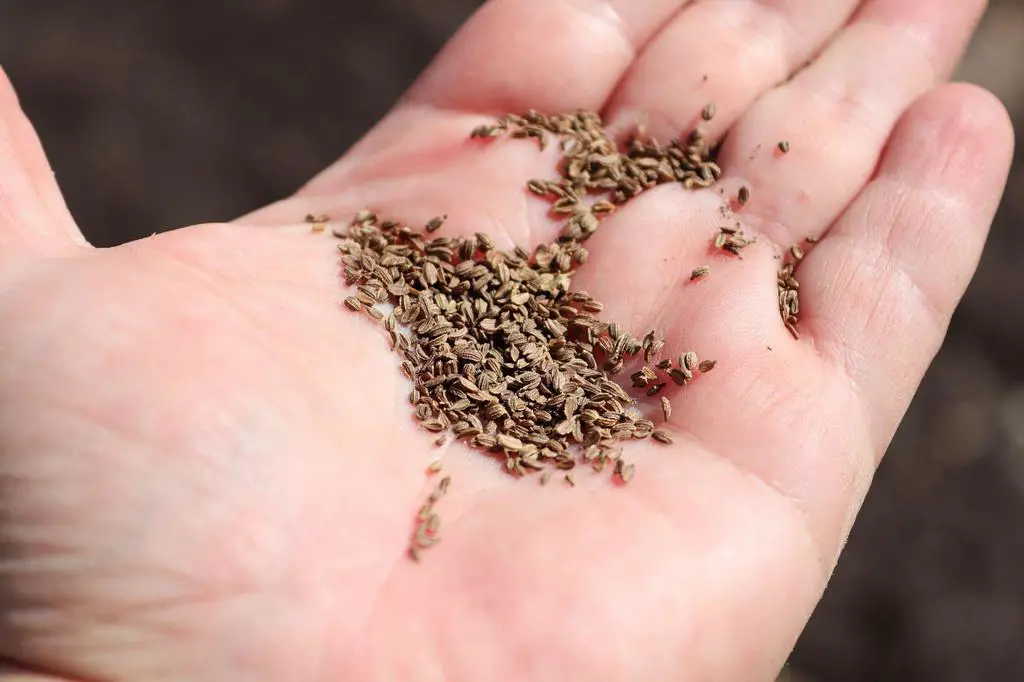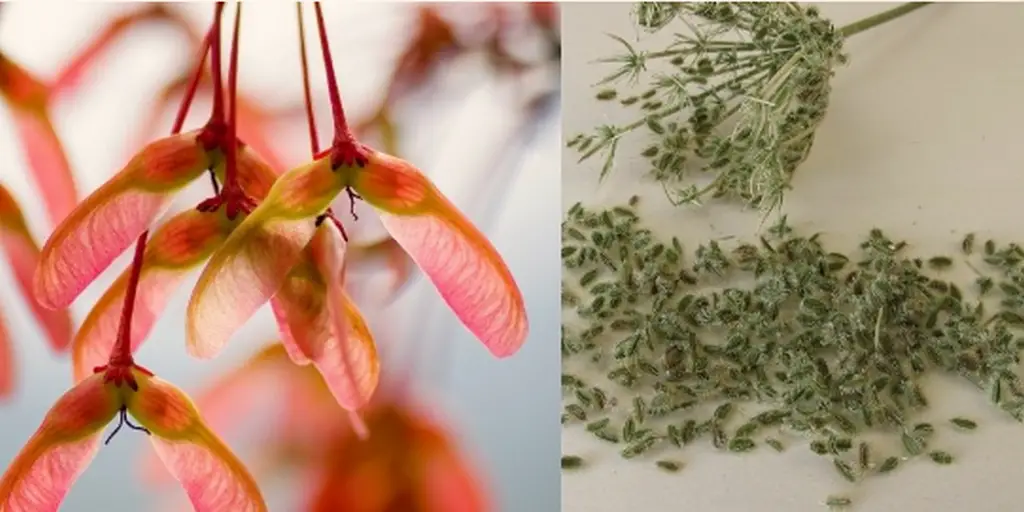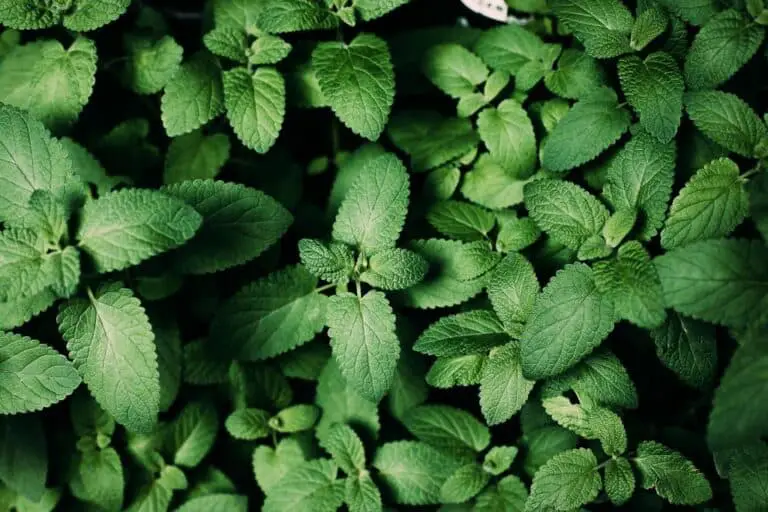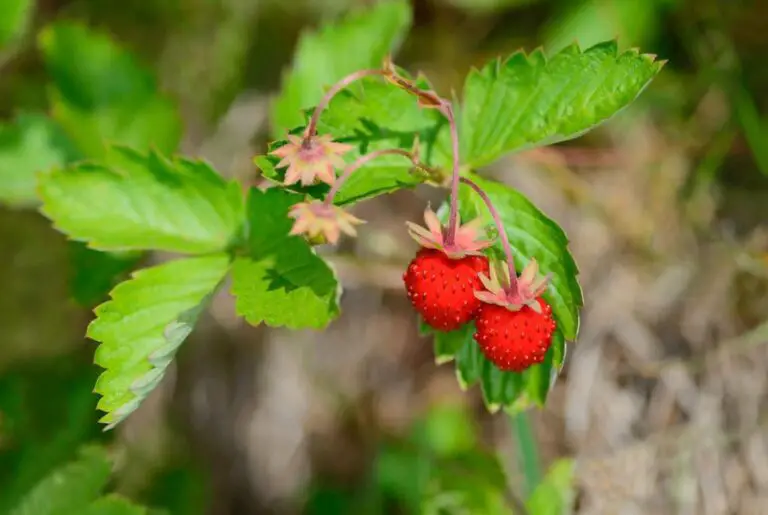Do Carrots Have Seeds? Where Do Carrot Seeds Come From?

Carrots are one of the most popular and versatile vegetables in the world, but have you ever stopped to wonder where their seeds come from? If you’re interested in growing your own carrots or are just curious about the life cycle of this root vegetable, it’s important to understand the origin of its seeds.
So, do carrots have seeds, and where do they come from? Carrots do have seeds. Carrot plants are biennial, meaning they need two years to complete their life cycle. In their second year, carrot plants will produce flowers and once pollinated flowers will produce seeds. A mature carrot plant will produce approximately 1,000 seeds.
Carrot: Brief Overview
Botanically speaking, carrots produce fruits called schizocarps that house the seeds. The winged “helicopter” that falls slowly spinning from maple trees is another example of a schizocarp that we are all more familiar with.

The winged maple seeds and the carrot seeds on the right are both examples of schizocarps.
Carrots are part of the family called Umbelliferae that includes coriander, dill, parsley, and cumin. The family gets its name for the flower clusters called umbels that look like umbrellas. Almost all the plants in this family are good companion plants whose flowers provide nectar for ladybugs and predatory flies.
Carrots were originally wild plants that grew in the Mediterranean region. Over time, the wild carrot was cultivated and its seeds were used to breed new varieties of carrots with improved flavor, color, and size. This process of domestication and breeding has resulted in the many different types of carrots that are now available, including orange, purple, yellow, and white carrots.
Do Carrots Have Seeds?
Carrot seeds are the reproductive units of the carrot plant, which belongs to the Apiaceae family. The seeds develop in the umbels of the carrot plant, which are clusters of tiny flowers. Carrots are biennial plants, which means that they grow vegetatively for one season and then produce seeds in the second season.
Carrots do have seeds. In fact, carrot seeds are an important source of genetic variation and are used by farmers and gardeners to grow new carrot plants. The seeds are small, brown, and oval-shaped, and are typically harvested from the dried umbels of the carrot plant. The seeds are usually sold in packets, and are easy to store for several years.
One carrot plant can produce 10,000 carrot seeds. Carrot seeds are tiny and 1 ounce of carrot seeds contains about 23,000 seeds. Carrot seeds can last for seven years with good germination rates if kept in storage with a moisture content of around 9%.
Where Do Carrot Seeds Come From?
Carrot seeds form as a result of the pollination process in the carrot plant. The carrot plant produces small, white flowers that are arranged in umbrella-shaped clusters, called umbels. The flowers contain both male and female reproductive parts and are capable of self-fertilization. However, most carrot plants rely on cross-pollination with other carrot plants or from insects such as bees to produce viable seeds.
The process of seed formation in carrots starts with pollination, where the male reproductive cells from one flower are transferred to the female reproductive cells in another flower. Through this process, a seed is made that has the genetic information from both parent plants. Over time, the seeds grow up and dry out. The seeds are then taken from the dried umbels.
There are several different types of carrot seeds available, including heirloom, hybrid, and genetically modified (GMO) seeds. Heirloom seeds are non-hybrid seeds that are saved and passed down from one generation to the next. Cross-pollinating two or more different kinds of carrots makes a new, better kind of carrot that can be used to make hybrid seeds. GMO seeds are seeds that have had their genes changed using modern biotechnology to give them certain traits, such as being more resistant to pests or having more nutrients.
Carrot seed for commercial carrot growth comes from seed production fields, mostly in Oregon. In 2004, 85% of hybrid seeds, which almost all commercial growers use, came from Oregon. Hybrid seed fields are produced by growing two parent varieties in the fields. One variety that is male sterile will have four rows, and the other variety that has viable male pollen will be grown in two rows.
Farmers that grow crops for carrot seed do so in two ways.
- The first way is “seed-to-seed” where a carrot crop is planted and allowed to overwinter and complete its two year life cycle in the ground. This method results in a lot of losses in the field as well as weirdly shaped roots not being culled after the first year.
- The second method is “root-to-seed”. In this method carrot crops are harvested when they normally would be usually in the fall. Foliage growth on top of the carrot is trimmed down to an inch or two and misshapen carrots are discarded. Then carrots are dried and placed in paper bags with wood shavings to absorb moisture and then the paper bags are sealed in plastic bags and placed in a refrigerated area.
When spring comes, farmers plant these root carrots at the same time they plant carrot seeds, but these roots are in their second year of growth and ready to produce flowers and seeds.
The seed-to-seed method is used by the majority of farmers in Oregon, with carrots planted in August, pollination occurring the following July, and carrot seeds harvested in September. Carrot seed fields are planted at least a mile apart in order to prevent cross-pollination of other varieties being grown in the area.
Around 10,000 bee colonies are used in Jefferson County, Oregon, where the majority of carrot seed fields are. Carrot flowers produce dark, strongly flavored honey that isn’t desirable for use in the kitchen.
For more information about where carrot seeds come from and the process, here’s an article by the Department of Horticulture at the University of Wisconsin and an article about the bees’ involvement in the process.
Can You Grow a Carrot From a Carrot?

A carrot plant will grow from the top of a carrot if replanted or grown in water hydroponically. The plant will produce roots that come out of the sides and bottom of the tops of the carrots, but the taproot, which is the carrot, will not grow back.
The foliage will grow from the top of the carrot, and it will produce flowers and seeds. The purpose of the taproot is to provide energy in the form of sugar to the plant, giving it what it needs to produce flowers and seeds. Growing the carrot plant from the top of the carrots may result in fewer flowers and seeds being produced.
How Many Carrots Can Grow From a Single Seed?
One carrot will grow from one seed. Carrots do not grow in bunches. There are multiple stems that come out of the top of each carrot, but each carrot plant has one taproot, the carrot, where it stores energy during its vegetative growth that it then uses to produce flowers and seeds in its second year of life.
How Do Carrots Reproduce?
Carrots reproduce through seed. They produce flowers in their second year of life that, once pollinated, become seeds. The seeds are very light and are spread easily by the wind. The seeds are edible to humans as well. Birds that eat the seeds spread them far and wide as they pass through their digestive tract.
How to Harvest Carrot Seeds
Collecting your own carrot seeds provides you with a large quantity of seeds of your choice. The flowers will appear at the stalk’s tips and branches. It doesn’t take many carrot plants to get a huge amount of seeds—somewhere between 1,000 and 10,000 seeds per plant. So just by leaving a few plants in the ground to overwinter, you can get a good amount of seeds the following year.
After pollination, flowers begin to dry out and turn brown. These seeds are mature. The umbels will dry and mature at different times on the same plant. Use a tool to cut the dry umbels off as they mature and collect them in a bag.
Bring the dry umbel to a flat work surface and collect the umbels from the flower heads with a plate or newspaper. Just take the flower heads and brush the seeds off of the flower head and onto your collecting surface.
Next, remove the outer shell from the seeds. You can rub the seeds together in your hands and see the smaller seeds separate from the outer shell. At this point, we need to separate the shells and other chaff from the seeds. Strainers of varying sizes can be used to catch the wind from a fan.
To use a fan, place it a good distance away so that there’s just a small breeze. Take a mixture of seeds and chaff in one hand and let it fall into a collecting bin. The chaff will blow away in the wind, and the seeds will fall into the bin.
How to Store Carrot Seeds
Give carrot seeds 3-5 days indoors, separated from the chaff, to completely air dry. Place the carrot seeds in envelopes and place them in the refrigerator. Most refrigerators keep their contents at a temperature of around 40 degrees, which is exactly the temperature we want for seed storage.
If food in your refrigerator freezes solid, the temperature is 32 degrees or lower, and that is too low for good seed storage. Seeds stored this way will last up to 7 years.
Conclusion
In conclusion, carrots are biennial plants that produce seeds in their second season. The pollination process makes the seeds, which are very important to farmers and gardeners. If you want to grow your own carrots or make new varieties of this popular root vegetable, you need to know that carrot seeds exist and where they come from.
With various types of carrot seeds available, such as heirloom, hybrid, and GMO seeds, it’s important to choose the right type of seed for your needs. Whether you’re a seasoned gardener or just starting out, understanding the life cycle of carrots and the origin of their seeds is a fascinating and informative journey.






